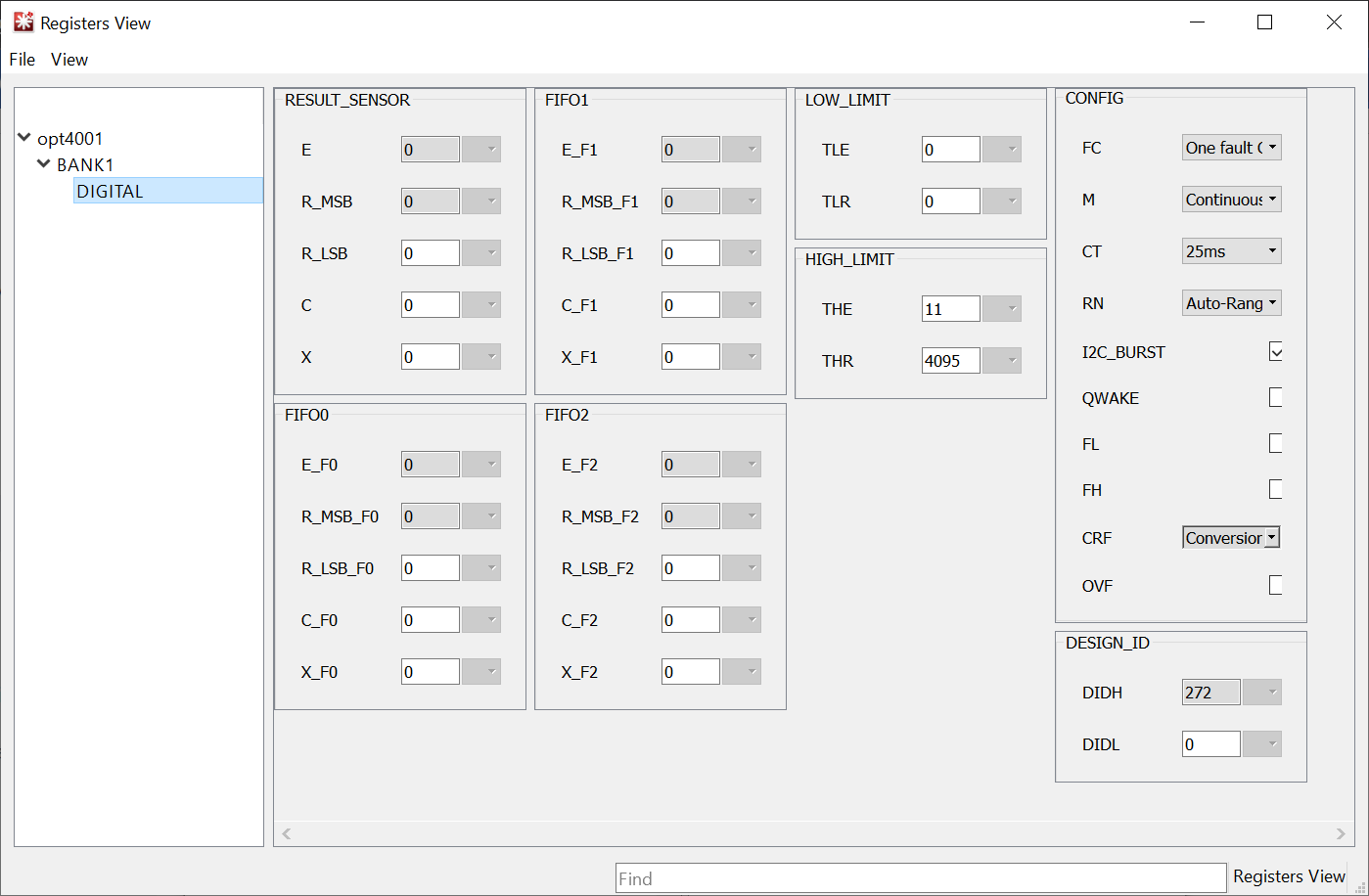SBOU293D November 2022 – January 2024
- 1
- Abstract
- Trademarks
- 1Overview
- 2OPTEVM Hardware Overview
- 3OPTEVM Software
- 4Schematic, PCB Layout, and Bill of Materials
- 5Troubleshooting
- 6Revision History
3.8.2 Overview of Device Registers: OPT4xxx Devices
 Figure 3-21 Registers View Example for
OPT4xxx Devices
Figure 3-21 Registers View Example for
OPT4xxx DevicesRegisters E, R_MSB, R_LSB, C and X are the result registers for single channel devices with registers 0x02 through 0x07 as FIFO registers. The result register provides the output data from the device as an exponent and mantissa value indicated as e and r in the register view. The mantissa is split between registers 0x00 and 0x01 as R_MSB and R_LSB. A sample counter (C) and CRC check bits (X) are also contained in register 0x01.
For color sensors, registers 0x00 through 0x07 are the result registers for each channel.
Registers 0x0A, 0x0B, and 0x0C are the configuration registers and provide feedback about the state of the device; the bit names and full descriptions are shown in the device data sheet. Each of the read-only status bits are grayed out and cannot be changed. Registers x08 and x09 allow low and high limits, respectively, to be set. These registers are used in certain interrupt reporting modes. The Design_ID is contained in register 0x11.